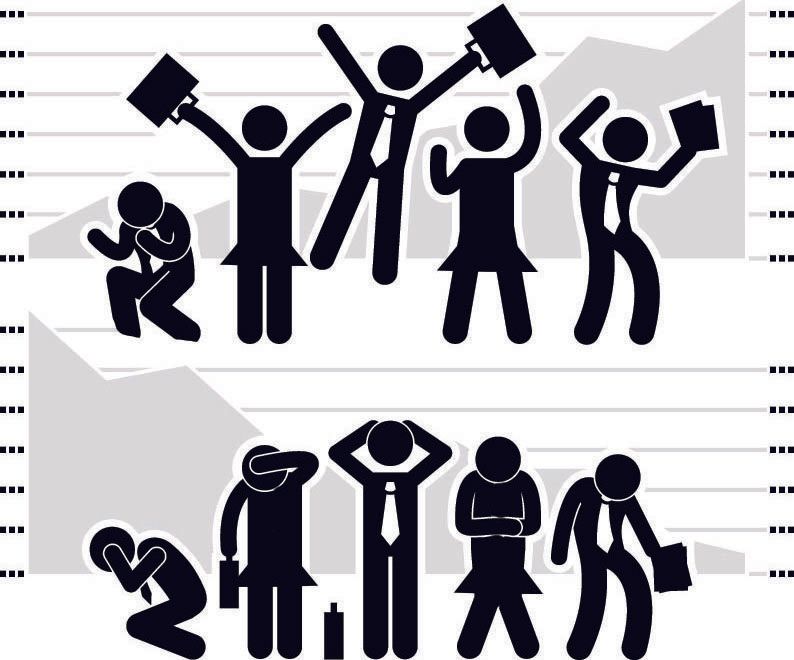BLOG
Living Your Everyday Legacy™: Finding Purpose, Even in Times of Uncertainty

You know, there are so many things we can’t control right now, and for most of us, that makes us anxious. But I want to encourage you with this: In each moment of your life, you have the ability to change yourself and those around you in profound ways.
No matter the time.
No matter the day.
No matter the circumstance.
Even amid moments of uncertainty, like the one we find ourselves in right now.
In moments that seem out of our control, there’s always something that’s within it: our perspective.
I like to say that I’m a Spiritual Pragmatist, which means that while I appreciate believing in a higher power and it’s guidance and influence in our lives, I also believe in action and doing, to bring about success and happiness. It’s about having balance, and part of having that balance means that we have to be conscious and mindful of how we’re showing up and how that influences any given situation, including the one we’re amid right now.
I spent 20 years as a funeral director and embalmer; I like to say that everything I’ve ever learned, I learned from dying. One would think that a career surrounded by death would have taught me a lot about dying, but in fact it taught me so much about life, and gifted to me the most beautiful lessons. Ones that, in moments like this, come through with crystal clarity and enable me to put into action the behaviours that can ground me, even amid all of the uncertainty.
EFFICIENT VS EFFECTIVE
My British, tea-totting grandmother used to say, “Good tea steeps.” My grandmother knew the difference between efficiency and effectiveness. For her, there was no such thing as an efficient way to make tea; there was only an effective way.
Can you make tea by dropping a tea bag into a mug of water and putting it in the microwave for ninety seconds? You can, sure. But, according to her, that’s not going to make a delicious cup of tea.
A drive-through car wash is efficient, but you might enjoy the therapeutic process of washing your car by hand. Ordering takeout is an adequate way to put dinner on the table, but a great satisfaction comes with preparing a meal from scratch yourself.
Sending a friend a text message to see how they’re doing is an economic use of time, but it’s not quite the same as picking up the phone and talking.
As a society, we are consumed by efficiency, collectively racing from one thing to the other and from one person to the next. Being able to make the rush seem effortless is perceived as honorable. Those who work the most are revered, as though the most stressed-out person will be awarded a trophy.
Sometimes you have to choose the efficient way; there’s no denying that. But we could all try a little harder to choose the effective way more often, especially when it comes to our relationships.
How do we do that when we are in the throes of the hustle or in the midst of chaos?
We pause.
THE PAUSE
Most of life’s magic happens in moments of pause. We need to stop and re-centre in order to reach a state of conscious awareness. Pausing helps us to slow down and plan our time more effectively, so that we create more meaning in our lives. The way my grandmother did with her tea.
Normally I would profess the importance of creating the space to do this, and so often, and I’m including myself, we struggle to find the time to do it.
Now, we’re at a place in time where the world has quite literally slowed down. So many of us are sequestered away in our homes, adjusting to a world where physical distancing is common place, and life outside of our homes has come to a grinding halt.
Is there time in your day to create the space to reinvest in something that brings you joy?
It wasn’t that long ago that many of us likely caught ourselves complaining that we didn’t have enough time in a day, or that we were missing out on things in life: missing quality time with our children, missing time for the gym, missing time to just sit and read. There are likely many more things you could add to this list.
While we adjust to this new normal we find ourselves in, try to negotiate some time for you to invest in ‘the pause’, even if that time is spent on an activity like reading a book, or moving your body, meditating or sitting in prayer. Whatever it is that fills your cup, it’s important to realize that in order to be of service to others, we have to spend time investing in ourselves.
COMMUNITY CONNECTION
The late, great Jim Rohn once said that we’re each a reflection of those with whom we spend the most time, so the key to being your best self is to be surrounded by those who support and inspire you. I like to call these my “finger snap people.” They’re the ones with whom you feel an instant attraction, as quickly as you can snap your fingers. More often than not, you can’t quite distinguish exactly what it is that draws you to them, but their energy is like a magnet. There’s something about their character that causes you to be perfectly content with who you are, while also inspiring you to seek ways to be a better version of yourself. And when you find these like-minded individuals, hold on to them tightly, because you are much more powerful together than alone.
We might be physically distant from one another right now, but that doesn’t stop us from taking advantage of the incredible technology that helps us stay connected. I would encourage you to reach out to one of your ‘finger snap people’. Make that phone call, send that email, heck, you can even watch a movie together over video chat. Will it be perfect? Maybe not, but you’re connecting to people that matter, at a time when connection matters. I promise that you’ll feel a little better afterwards, because people need people and we’re all in this together. We don’t have to make grand gestures. The most meaningful moments can happen in the simplest of ways.
Sometimes, allowing someone the space to be seen and heard is the one thing they need the most, as they navigate their new normal right now. If that person is you, your community, your go-to people, are the ones you can rely on, no matter what. Just ask. I suspect they’ll be there, in the snap of a finger.
There’s no question that the world we find ourselves in today, isn’t the world we were in not that long ago. There’s also no question that through it all – the up’s, downs and all-arounds – if we just remember that our perspective can shift everything, we suddenly find ourselves with more control than we might have believed we ever had.
If there’s one thing I believe, it’s that everything we’ve ever been taught about legacy – either consciously or unconsciously, is that it’s something that there once we’re gone – once we’re dead. I also know that when we shift the narrative around legacy, from something we leave to something we live, every single day, we can realize the power of understanding the impact we’re making - while we’re still here. I’ve seen first hand how that shift can help us realize the depth and breadth of that impact, help define our purpose and help us live our everyday legacy.
When we realize that the way we show up in the world today, is the way we’ll be remembered tomorrow, we transform not only our relationship with the world around us, but also with ourselves in that world.
For all the chaos that COVID-19 has caused in the world, it’s powerful to see humanity band together for the greater-good – living with purpose, on purpose and showing how marrying that with compassion can be so incredibly powerful.
Video of this message can be found here: https://youtu.be/zHaW-5dzVME
RECENT ARTICLES

For most of us, things that get overused often lose their value. The same can be said for ‘buzzwords’ that make an appearance and catch on, which overtime, become more of an annoyance when we hear them being used on a regular basis. To that end however, many of these words truly do hold some powerful value, and here are just a few that can lead to some transformational results, if you just give them a chance. Team For years, leaders have been programmed to refer to their team as staff, or employees, some – even as far as ‘my people’ – inferring some sort of ownership. While some of these words wouldn’t have raised an eyebrow in the past, those in the younger talent pool want to be thought of, and conversely referred to, as more. For many, the word alone speaks to the importance of each individual team member’s unique skills, which ultimately contribute to the overall collective success of the organization. Many leaders find that referring to their employees as a ‘team’, also creates a sense of broad accountability; that everyone’s success is dependent on each supporting one another. Leadership The days of the ‘manager’ or ‘the boss’ are gone. Most people have been fortunate to have worked with someone who they felt truly embodied the qualities of a talented leader; someone who commanded peoples respect, not by demanding it, but rather by leading with virtue and by example. Leadership is meant to be inspirational in it’s nature, and a great leader rallies their team to support the overarching objectives of the business; not just commanding or telling them what needs to be done. Oftentimes, leadership embodies a kind of fire and passion that’s unlike anything else, and it’s precisely those qualities that create fierce loyalty in your business, and breeds’ confidence amongst the team. Synergy Synergy may be an often-overused word, yet approaching your business processes with it in mind, is always essential. Finding ways to work more synergistically might sound like a big-business term, but it’s application can benefit even smaller businesses, who want to use their time and resources more efficiently. Ultimately, when less time is spent on tasks that are inefficient, or having resources, including your team, tied up in processes that are redundant, allows the operation more time to focus on being effective at what you do. Oftentimes, taking the time to speak to your team about what challenges they face with processes which are in place, or how their time gets needlessly devoured in a day’s time, can provide you with the perspective to see what (often simple!) changes can be made. Engagement The impact of engagement in the workplace can be remarkable. Not only does a highly engaged workplace boost productivity, but it can also significantly reduce costs, which directly impact the bottom line. Engagement is so much more than it might suggest at first interpretation; its’ really about giving people the tools they need to be successful at what they do, which ultimately drives an organizations success. Engagement however, needs to be fluid at all levels of the organization. If leadership expects their team to be engaged, then it requires them to live that same value consistently, each and every day. Employers who view engagement as an investment will often attest to its many byproducts, not to mention, its powerful attraction ability to be a magnet for recruitment. Culture The word culture alone evokes a sense of belonging and meaning. Most people embrace the culture that they’re either raised with or that they adopt as they’re own. Smart workplaces and proactive leadership take every opportunity to create the same, within the confines of their organization, and it only makes good sense that they do. They recognize that the culture of their organization, which is what makes it truly unique, is what has the power to galvanize people to it. Studies have shown that a strong, positive workplace culture is directly correlated with happiness on the job, and while that may seem like a ‘warm and fuzzy’ approach to the workplace, when it drives engagement and conversely, success, it’s one that begs to be focused on. Creating, maintaining and sustaining an indelible workplace culture takes work, but it’s ultimately an investment that yields high returns.

Before you know it, something has changed, and before you know it, again, something’s changed. Funeral and cemetery services are evolving faster now then they ever have before. At an alarming rate, the profession has shifted and seemingly these shifts are continuing to happen, and moreover, they’re showing no sign of letting up. Have you, or do you feel as though the changes are consuming you? Do you find it challenging just to stay on top of things? Do you ever find yourself wondering “What next?” If so, you’re not alone. In a profession far more elusive than ever before, where the consumer, ‘our families’, are challenging the status quo at every turn and are expecting more of you and your team, there’s one single ingredient that can separate those who will thrive from those who will, if they’re lucky, just survive. That secret ingredient? Innovation. Innovation is the lifeline to success in a profession that has long rested and lasted on it’s laurels, virtually expecting the consumer to accept and appreciate that what has always worked, will in turn, suit them just fine – even if that solution was one that was developed decades before. Now, before we get too much further on here, let’s also agree that one of the first steps to evolving a culture of innovation, is accepting a need for change, and by proxy, an acceptance that we’re all guilty, at one point or another, of falling victim to complacency. Agreed? Excellent. Now, we’re off to a good start. When you’re building a culture of innovation, there’s a few steps that need to initially take place, and heads up: they’re not easy. In fact, it’s why most people fail to innovate, simple because these steps take a concerted effort that requires more than most are willing to invest in the process. I’ll assume if you’re still reading, you’re all in. Let’s get down to it. Here are a few suggestions that will help you to re-frame how you approach your day, and fulfill your passion; how you engage with your client families and even your team; and finally, position both you and your employees to be vigilantly proactive, in all you do. 1. Accepting that there’s a need for change Didn’t we establish that just a moment ago? Right. We did. But it’s worth repeating. I’ve met a lot of funeral directors, cemetery professionals, leaders and the like over the years, and the one thing we are, are a proud people. But let’s not pretend like we’re without fault. Many of us have chosen the road well travelled, as it relates to offering a family a service or product that’s met the need of a hundred or a thousand families before them, and that’s fine – and, before the masses rise to say that what we’ve offered in the past is still relevant and meets the needs of families today, I agree – many times, it does. But we’re not talking about just surviving, but thriving. Those families aren’t the question or challenge as we shift to a culture of innovation; it’s the families who don’t want what we’ve always offered. What value proposition do you have for them? Chances are, without a willingness to extend beyond your comfort zone, you may have very little value to them, if any at all. 2. Get comfortable being uncomfortable When you shift from a place of comfort, it can be beyond awkward. In fact, sometimes it will be so awkward that you’ll feel like your experiencing stress or anxiety, when you’re outside of what you’re accustomed to. Try this simple exercise: Set this publication down for a moment, grab a pen, and print your full name, backwards. Then again. And then, one more time. Afterwards, come on back. !kcab emocleW That didn’t feel right, did it? The second time though, you knew what it felt like, and knew what to expect. By the third time, I’d hazard a guess that what may have been initially very challenging, wasn’t as much so this time? One of the greatest challenges to shifting what we’ve always done, or the way we’ve always done something is to develop a comfort with the discomfort. I’ll be the first to admit that it’s not fun, and that there’s been many times that the theory of this is far easier than the practice. That said, I’d also be the first to say; the longer you spend repeating anything, they more fluent you become with it. 3. Celebrate failure To really, fully, wholesomely foster a culture of innovation, you have to do more than simply embrace failure; you have to celebrate it. What this really boils down to is your ability to manage risk, because after all, your tolerance for risk will be directly correlated to your openness to innovate. This also means you need to give yourself permission to make mistakes. Let’s be honest; if you’re venturing into new, unexplored territory, you’re bound to take a wrong turn now and again, and have to retrace your steps to recalibrate, just so you can start again. While no one wants to constantly be recovering from errors, don’t let them derail you or your team. Celebrate them as much as you celebrate the victories, and rest assured knowing, as Alfred North Whitehead once said, “Error is the price we pay for progress.” 4. Go back to dumb Let me say immediately; I really, truly and honestly, don’t think anyone is dumb. That said, I know a good number of people, myself included, who have felt dumb at one point or another. I remember when I was a young boy, and my uncle decided to teach me how to play the game of chess. Pawns, knights, bishops, rooks, a queen and a king, all with specific allowable moves, or navigational challenges, as I liked to look at it – the game confounded me, and I felt, to say it simply, quite dumb. While he moved around the board with grace, I fumbled awkwardly, innocently attempting illegal moves and perpetually misnaming the pieces. I couldn’t get it. What my uncle learned very quickly, was that he had to break the game down to it’s simplest form and pretend like he knew nothing about the game, in order for him to present it in a way that made sense. Essentially, he dumbed it down. It didn’t make the game any less complex, but his approach compartmentalized each part of the game, so eventually, all put together, the strategy made sense. He slowed down, and it was obvious to me that his passion for the game is what was steering his direction, not his knowledge. It was only chess, but it was as if he was reinvesting in his experience, and re-learning the game along with me. So, as you approach something you and I know incredibly well, take a moment to slow down and pretend like you know nothing about what you know so much about. It will shift how you look at it, and maybe – just maybe – enlighten you to see what you’ve seen so clearly in the past, in a new light, from a new angle. 5. Embrace the process You may completely transform, and it may not work, but remember: You’re not left with nothing; you still have something. As hard as it may be to see, and as frustrated as you may be, that something is the process. Instead of being defeated, use the roadmap that you’ve created, and employ it again. With time, the process won’t be nearly as challenging and antagonizing, and eventually – I promise – you’ll approach it as naturally as you do most things that you’ve given effort and practice. In time, as challenging as it may be to think about now, it will become your natural instinct to approach situations from an innovative stance, as opposed to one based purely on knowledge and experience; and as you read that, as uncomfortable as it sounds, again – I promise – it will be completely refreshing. Change is never fun or easy. Most of us hate it, yet even our disdain for it can’t help us to avoid it. Change is what propels us forward when something stops working, and we need to regain our momentum once again. It’s the very thing our businesses need to remain viable, and even relevant. Change is inevitable. Most often, we don’t get to control when it happens. What you do get to control, is how you respond to it. Approaching change with an innovative, proactive perspective may just enlighten you to a fresh, new way of doing business and leading a team. A way, that with some work and a bit of discomfort, will serve you well, and your client families even more so.

As a leader, do you ever wonder why your team members aren’t engaged? Do you ever wonder why they're not contributing more, or why they seem to be uninterested in what they’re doing? Do you ever feel as a leader as though you’re in an engagement recession: increased change in our profession resulting in economic uncertainty, leading to anxiety and confusion on the part of your team members, accompanied by a rise in unproductive behaviors? Leaders today need to be able to create inspiring workplaces that truly engage team members to give their best to the organization. There are some simple truths when we look at engagement: 1. When times get tough, give more! It’s inevitable in business that you’ll face a period of time when things don’t go as smoothly as you’d like them to. These valleys in business are the opportune time to rally your team and support their engagement by investing in preparing both yourself and them, for when business bounces back. While many business owners pull back on the reigns and curb spending, studies have shown that companies who forge forward and utilize these times as an opportunity to grow, felt that they have been better equipped and more engaged when business returned or the slow period let up. 2. Engagement is like simple multiplication – but, it works both ways If you have a disengaged team, and you aren’t sure why, do one simple thing; look in the mirror. Your behavior, your enthusiasm, your connection and passion with what you do – it trickles down to your team members, whether you like it or not. Engagement starts at the top and more and more research is being done, and it’s evidence points to the fact that an organizations people are essentially the byproduct of their leaders, in terms of how engaged they are with what they do, and how they conduct themselves. If you’re a leader who is engaged, you can expect engagement to multiply in your organization. What’s equally as important to recognize is that disengagement multiplies just as easily as it’s positive counterpart. 3. It’s certain you’ll face uncertainty Uncertain times often provoke a need for change, and change requires us to evolve. The ability to embrace change and then proactively manage your business and your people will be the success model of those who fearlessly face the challenges that change can bring. Engagement is what drives you to innovate solutions that contribute to overcoming the challenges before you. Uncertainty is inevitable. You can, however, be certain to manage it effectively. 4. Engagement drives creativity. Creativity drives innovation When your team is more engaged, not only do they feel more apart of the success of your organization, but they also perform better and are more likely to contribute ideas. In addition to the fact that your people are more engaged, the byproducts can be plentiful and phenomenal; increased loyalty, greater profitability, improved revenues, and higher client satisfaction – the list goes on, and on. How do you engage your team? Here’s a list of things, to get you started: 1. Stop calling your human capital ‘employees’ and start referring to them as ‘team members’ This simple change immediately instills a greater sense of belonging. It breaks down barriers between you, and them. Today’s workforce is motivated by feeling like they’re a part of something more than just a hierarchal reporting structure. Whether you own the business, manage it or supervise a group of people – introducing this vocabulary will let them know you see them as more than just someone who reports to you. 2. Involve your team members When you involve your team, you root them more in the organization and allow them to ingratiate not only themselves to the business, but their ideas and energy. When you draw on their opinion and ideas, you’ll uncover a well of knowledge and expertise you may not have known existed. 3. Be transparent When you share your success plan for the company with your team, you allow them to understand things like how the business makes money, loses money, and the expenses and costs that go into simply unlocking the front door every single day. It’s in this transparency that your team will begin to see how they contribute to the success personally. 4. Be honest Your team will value when you are honest with them about how things are going with the business. When things aren’t going as well as planned, you’ll find them rallying their energy to overcome any challenges you face, to see the business successfully come back on course. Being honest maintains not only your integrity, but also your credibility. When you’re honest, they’ll support you and your objectives for the organization. 5. Embrace Performance Reviews When executed properly, performance reviews can be the single positive differentiator between a leader, and an engaged leader. Set aside regularly scheduled time with your team members, individually and as a team, to discuss both their accomplishments and the areas you feel they can improve upon. As it relates to the areas of opportunity, team members are engaged when they are called upon to discover the solutions to navigate them to success, so ask them for ways they think will step up their game. 6. Thank your team for what they do Thanking team members for the ways they contribute to the success of the organization, and ultimately, your success – is essential. Studies show that it is the single biggest motivator, moreover than other rewards, including those of monetary value. While other rewards are appreciated – start with ‘thank you’, and be sure to do it as soon as you notice they’ve done something deserving of recognition. Engaged leaders build engaged teams. It starts at the top, and without engaged leadership, organizations simply can’t engage the hearts and minds of their employees. Engagement is the emotional and intellectual involvement that motivates employees to contribute to organizational success. Knowing this – as a leader – ask yourself; “How engaged am I?”
Codi Shewan, President
416-246-2231
codi@everlearnassociates.com
General Inquiries
info@everlearnassociates.com
416-246-2231
codi@everlearnassociates.com
General Inquiries
info@everlearnassociates.com
WHO IS ONLINE
We have no guests and no members online

